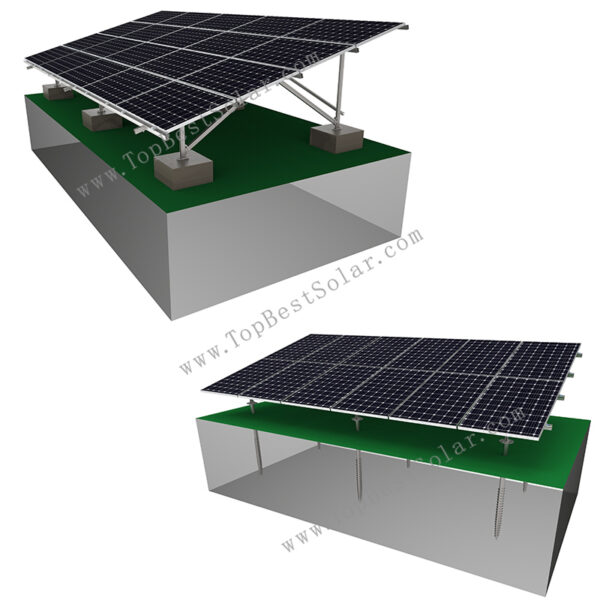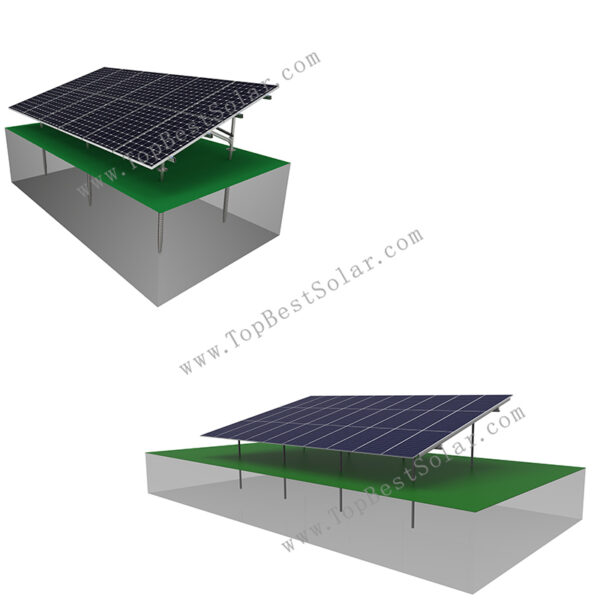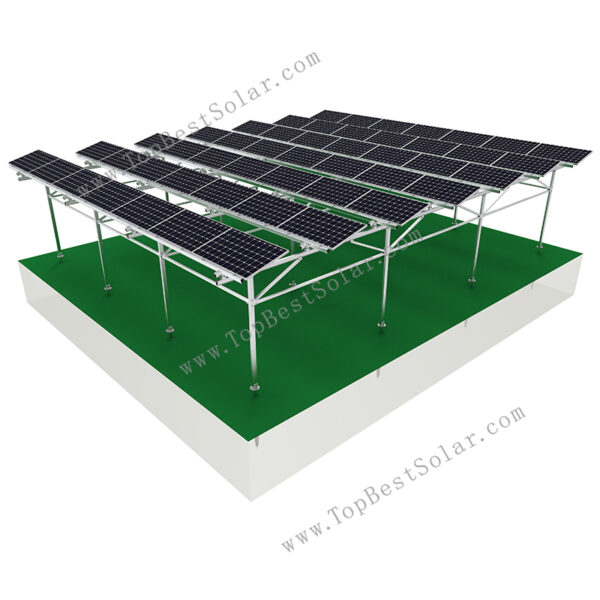What Are Ground Mounted Solar Panels?
Ground mounted solar panels are photovoltaic (PV) systems installed on frames or structures secured to the earth, rather than on building roofs. They typically use one of two designs:
– Fixed-Tilt Systems: Stationary frames set at an optimal angle for local sunlight (e.g., 30–40 degrees in temperate regions).
– Tracking Systems: Frames that follow the sun’s path (single-axis for east-west movement, dual-axis for full 360-degree adjustment), boosting energy output by 15–25%.
These systems connect to inverters (to convert DC to AC power) and can be grid-tied, off-grid, or paired with battery storage.
How to Install Ground Mounted Solar Panels (Step-by-Step)
- Site Assessment: Hire a professional to check land slope, soil type (avoid wet/clay soils), sunlight exposure (minimize shade from trees/buildings), and local zoning laws.
- Permit Acquisition: Secure permits from your city/county—requirements vary, but most areas need electrical and structural permits.
- Foundation Installation: Choose a foundation based on soil:
– Concrete footings (for heavy systems in stable soil).
- Frame Assembly: Mount steel/aluminum frames to the foundation—ensure level placement for fixed systems or install tracking mechanisms.
- Panel & Inverter Setup: Attach solar panels to the frame, wire them to the inverter, and connect the inverter to your electrical panel (grid-tied) or battery (off-grid).
- Inspection & Activation: Pass local inspections, then activate the system with your utility provider (for grid-tied setups).
Pros of Ground Mounted Solar Panels
– Higher Energy Production: Adjustable angles and tracking systems maximize sunlight capture.
– Easy Maintenance: Panels are ground-level, making cleaning and repairs simple.
– Scalable: Add more panels easily if you expand your land or energy needs.
– Roof Independence: Ideal for homes with weak roofs, shaded roofs, or historic buildings (where roof mounts are prohibited).
How to Choose the Best Ground Mounted Solar Panels
- Panel Efficiency: Opt for monocrystalline panels (18–22% efficiency) for small spaces; polycrystalline (15–18%) for budget-friendly options.
- Frame Material: Steel frames are durable (good for harsh weather); aluminum is lightweight (easier to install).
- Tracking vs. Fixed: Choose tracking systems if you have high energy needs and want maximum output; fixed systems for lower cost.
- Warranty: Look for 25+ year panel warranties and 10+ year inverter warranties.
Conclusion
Ground mounted solar panels are a powerful solution for those with available land, offering higher energy output and flexibility than roof-mounted systems. While upfront costs are higher, long-term savings and incentives make them a worthwhile investment for many homeowners and businesses. By assessing your land, budget, and energy needs, you can determine if a ground mounted system is the right step toward renewable energy.









